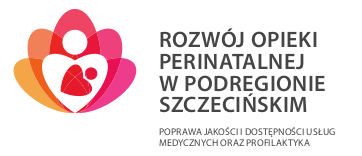APNOEA
An apnoea is a breath-holding spell in a neonate lasting a minimum of 20 seconds or less, but with additional accompanying symptoms: significant deceleration of cardiac activity, or decreased blood oxygenation (the so-called: saturation level drop). The frequency and intensity of apnoea in neonates is linked with child’s maturity – most frequently apnoea occurs in neonates born prematurely. One needs to bear in mind that short intervals in breathing (lasting 5-10 seconds) are a very frequent phenomenon in newborns. If breath-holding spell is observed, one must not panic, but remember that newborns experience the so-called periodic breathing. It is a physiological phenomenon and it involves alternating phases of breath-holding (not longer than 20 seconds) and breath acceleration.
There are three types of apnoea:
- central sleep apnoea – it is most often the cause of apnoea in preterm babies and it arises from the immaturity of the respiratory centre located in the medulla and it involves a cessation of respiratory movements as a result of lack of stimulation from the respiratory centre
- obstructive sleep apnoea – caused by an obstruction of the airways, the respiratory drive is maintained, but no air outflows through the upper airways
- complex, mixed sleep apnoea – the cause lies in the disorder of central regulation of respiration and airway impairment.
A contribution factor to the occurrence of an apnoea in a neonate is inducing a reflex by irritating the back throat wall – for instance during energetic removal of mucus from the throat with a catheter or the entry of some liquid to the upper airways during feeding.
In order to recognize an apnoea in a baby, one must determine lack of chest movement and lack of air flow through the nose and the mouth. Apnoea may be accompanied by blanching or lividity of the skin and the mucosa as well as heart rate deceleration.
All neonates born before the 35th week of gestational age ought to be monitored for at least 1 week after birth on account of the risk of apnoea. Monitoring needs to be continued for a minimum of 5-7 days after the last breath-holding spell.
Many methods are applied in the treatment of apnoea in preterm babies. Tactile stimulation of the child is often used, as touch has a stimulating effect on the baby. Treatment may also involve oxygen therapy, supporting breathing with a positive end-expiratory pressure, the so-called CPAP – Continuous Positive Airway Pressure. Medication can be used as well. Children staying at home with a diagnosed disposition to apnoea may require the use of apnoea monitors.
Parents often express their concern related to sudden infant death syndrome (SIDS). Despite the fact that SIDS more frequently affects preterm infants or neonates with low birth weight, the occurrence of apnoea does not constitute a risk factor in that regard.
Recommended course of action decreasing the risk of SIDS:
- position during sleep – prone position increases the risk of SIDS occurring, whereas a dorsal position on a hard bed decreases it
- parents avoiding smoking – newborns exposed to tobacco smoke during pregnancy or after birth run a higher risk of SIDS
- not overwarming the child – babies kept in too high room temperature are more prone to SIDS
- breast feeding – infants who were never breast fed are more prone to SIDS
Prepared by: Beata Tomczyk




